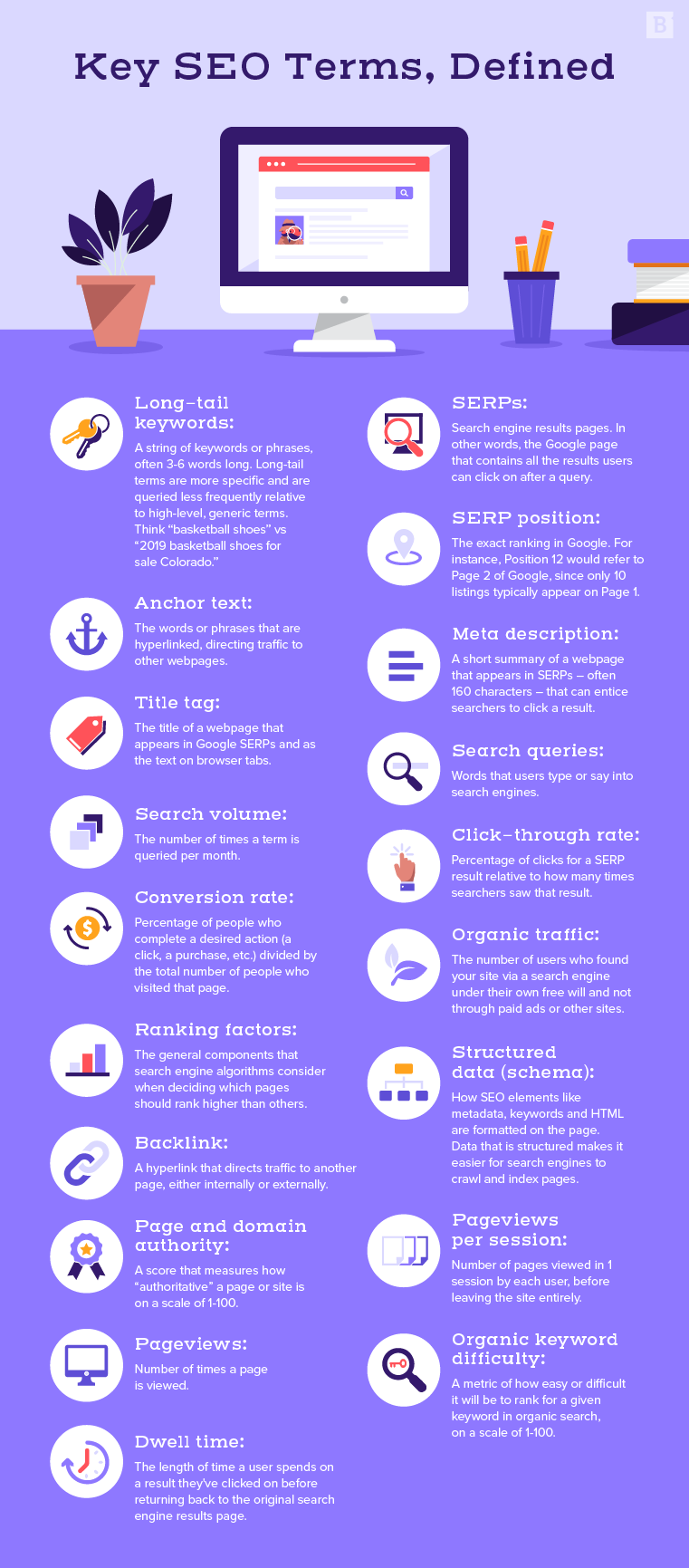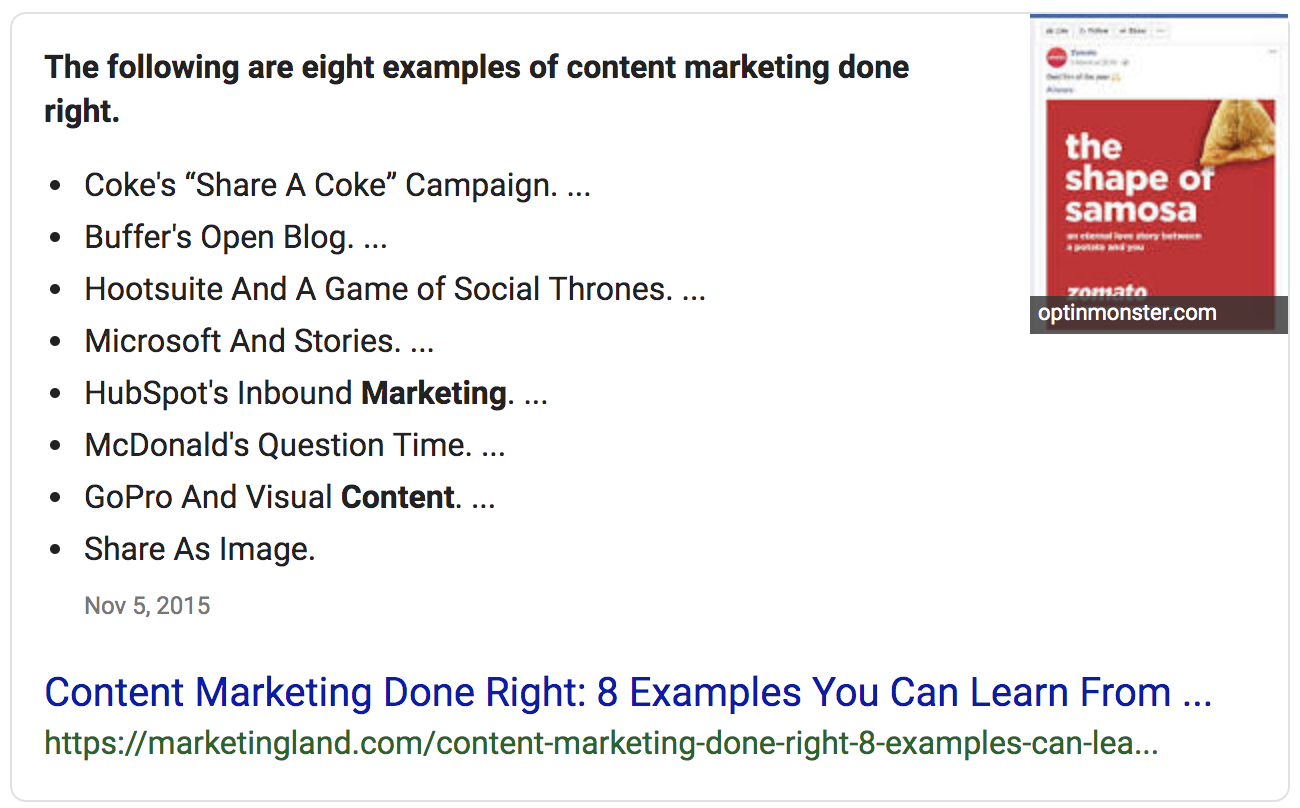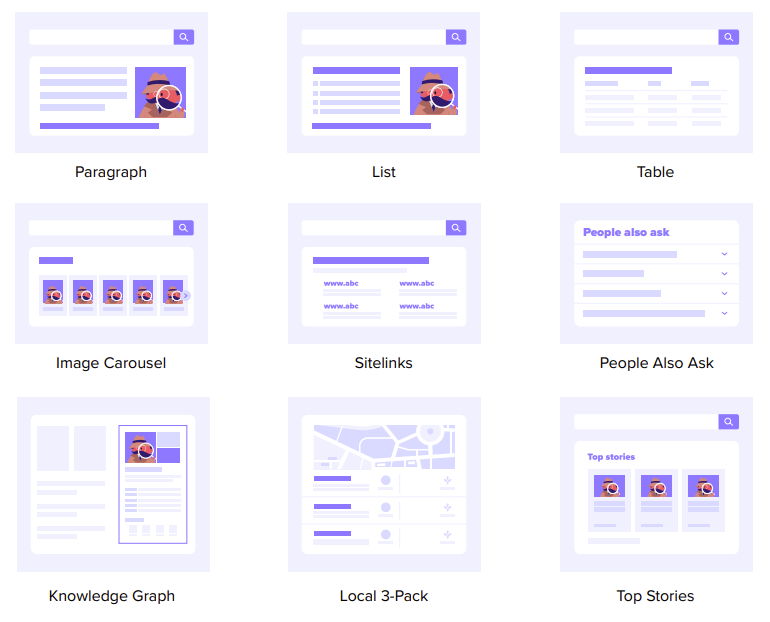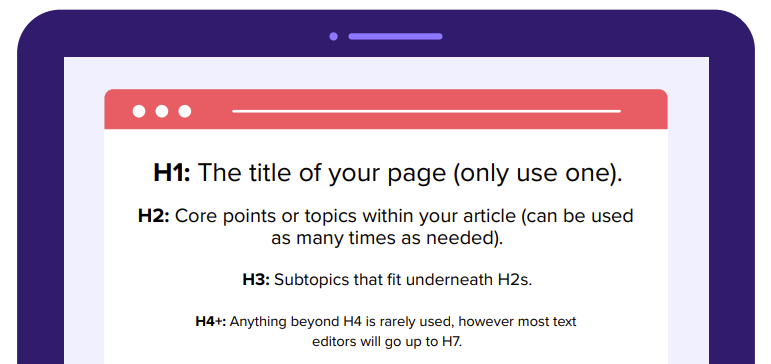Search engine optimization is an $80 billion industry. Are you getting your money’s worth from your SEO content writing efforts?
SEO writing requires analytics proficiency and high-quality copy skills. It’s the convergence of data science and art, blending content creation with effective SEO techniques.
So how do you do it right? How can you please readers, search engines and your boss all in one go by producing SEO-friendly content?
What is SEO Writing?
SEO writing is the implementation of keywords and key phrases within web content to optimize it for search engines. SEO content writers and marketers use SEO strategies to increase their site’s organic visibility and SERP rankings. The best way to write for SEO is to pair high-quality copy with targeted search terms, aligning with search intent.
With traditional copywriting, the content writer is focused on other goals and not necessarily on having the product come up first as a search engine answer. These types of copy may reach the consumer in the form of a TV commercial or product label — but an SEO copywriter meets readers on a web page, often through a well-crafted blog post. With professional content writing, the goal may be broad enough to encompass both SEO results and traditional marketing outcomes.

Key SEO Terms, Defined
- Long-tail keywords: A string of keywords or phrases, often 3–6 words long. Long-tail terms are more specific and are queried less frequently relative to high-level, generic terms. Think “basketball shoes” vs. “2025 basketball shoes for sale Colorado.”
- SERPs: Search engine results pages. In other words, the Google page contains all the results users can click on after a query.
- SERP position: The exact ranking in Google Analytics. For instance, Position 12 would refer to page 2 of Google, since only 10 listings typically appear on Page 1.
- Anchor text: Hyperlinked words or phrases directing traffic to other web pages.
- Meta description: A short summary of a webpage that appears in SERPs — often 160 characters — that can entice searchers to click a result.
- Title tag: The title of a webpage that appears in Google SERPs and as the text on browser tabs.
- Search queries: Words that users type or say into search engines.
- Search volume: The number of times a term is queried per month.
- Click-through rate: Percentage of clicks for a SERP result relative to how many times searchers saw that search result.
- Conversion rate: Percentage of people who complete the desired action (a click, a purchase, etc.) divided by the total number of people who visited that page.
- Organic traffic: The number of users who found your site via a search engine of their own free will and not through paid ads or other sites.
- Structured data (schema): How SEO elements, such as metadata, keywords and HTML, are formatted on the page. Data that is structured makes it easier for search engines to crawl and index pages.
- Ranking factors: The general components that search engine algorithms consider when deciding which pages should rank higher than others.
- Backlink: A hyperlink that directs traffic to another page, either internally or externally.
- Page and Domain Authority: A score that measures how “authoritative” a page or site is on a scale of 1–100.
- Pageviews: The number of times a page is viewed.
- Pageviews per Session: The number of pages viewed in one session by each user before leaving the site entirely.
- Organic keyword difficulty: A metric of how easy or difficult it will be to rank for a given keyword in organic search, on a scale of 1–100.
Subscribe to
The Content Marketer
Get weekly insights, advice and opinions about all things digital marketing.
Thank you for subscribing to The Content Marketer!
Start With Your Goals
The foundation for any SEO content strategy is to know what you hope to achieve. Set measurable goals before you begin, so that the SEO copywriter, marketing managers and other stakeholders are all working toward the same KPIs.
Here are common metrics to measure:
- Click-through rate: This is the number of clicks that the copy and product acquire divided by the number of times it is shown on a search engine results page (SERP). A high click-through rate is often a sign of good SEO.
- Conversion rate: The number that results from dividing conversions by the number of total interactions that can be tracked to a conversion during the same time period.
- Organic traffic: Readers and consumers who visit a web page through unpaid means. Increasing organic traffic is a key goal of any SEO strategy.
- Backlinks: Links from one website to a page on another. Quality backlinks can boost your site’s authority.
- SERP position: The positions a website has in organic search. A higher position means better visibility.
- Dwell time: The length of time a person spends looking at a webpage. Engaging, relevant content can increase dwell time.
- Page and Domain Authority: Search engine ranking scores. Higher authority often leads to better search engine rankings.
- Organic keyword opportunity/difficulty: A score that tells you how challenging it would be for the website to rank high on a SERP for a certain keyword. Tools like Google Keyword Planner can help assess this.
- Pageviews per Session: The website’s total page views divided by the number of sessions that have happened. This metric indicates user engagement with your website content.
The SEO writer should be given the data they need to succeed so that each new page that’s created is tied back to a core business goal. A well-planned content strategy aligns with these goals and utilizes SEO best practices.
Know Your SERP Presentation
There are a growing number of ways search engines present your webpages to the public, known as featured snippets. This means not every piece of content is presented to searchers in the same way. Understanding Google’s algorithm and how it displays search engine results is vital for effective SEO content writing.
Even if two companies write an SEO article about the same topic, if one of those pages ranks highly in SERPs, it could earn a featured snippet. So while Company A is presented as a generic blue link, Company B is presented with additional images, bolded text and more, enhancing their digital marketing efforts.
Company A:
Company B:
To stand out from competitors, understand how your quality content is going to appear in Google SERPs — then optimize for that specific format. Here are the featured snippets you’re most likely to encounter as an SEO article writer:

- Paragraph.
- List.
- Table.
- Image carousel.
- Local 3-Pack.
- Knowledge Graph.
- Sitelinks.
- People also ask.
- Top stories.
Being aware of these formats allows an SEO expert to tailor content creation accordingly, improving the chances of appearing in featured snippets.
Think in Terms of Ranking Factors
In line with your company’s own commercial objectives, there are also Google’s preferences to keep in mind. The search engine’s primary algorithm, RankBrain, helps process web pages and determine where they should rank in SERPs.
So content writing isn’t just pleasing your readers; it’s about pleasing Google too. That’s why it’s important to know the specific SERP rankings factors Google looks at. There are more than 200, but 10 of the most prominent are:
- Content quality: Is your SEO article accurate, relevant and user-friendly? High-quality, relevant content is favored by search engine algorithms.
- Backlinks: Do other sites link to your content? Backlinks from reputable sources can enhance your SEO.
- HTTPS: Is your site secure? Security is a ranking factor in Google’s algorithm.
- User experience: Is your content visually and informationally valuable and easy to engage with? A positive user experience is crucial in keeping visitors on your site.
- Mobile-first: Is your site optimized for mobile screens? With the rise of mobile browsing, having a mobile-friendly site is part of SEO best practices.
- Page speed: Does your page load in 2 seconds or less? Faster-loading pages improve user experience and search engine rankings.
- Direct traffic: Do users come directly to your site, or do they have to Google you first? Direct traffic can indicate strong brand recognition.
- Content depth: Is your content more comprehensive than similar pages on the web? In-depth, optimized content can rank higher in search results.
- Behavioral signals: Do people share, comment and mention your content on social media? Engagement can boost your SEO.
- Schema: Is your content easily understood by search engines? Using structured data helps search engines interpret your website content.

Strategic, Not Stuffy: How To Use Keywords
The SEO service has always been an evolving discipline. In the earliest iterations of the internet, content was ranked and served to users based on repeating the same keywords as many times as possible. This was referred to as keyword density.
However, in the last five years, Google’s algorithms have gotten smarter, and they know that keyword stuffing is spammy and not useful to readers. So, copywriters have had to shift their approach: Write for the end-user, not a magic number of keywords.
What this means in practice is that each page should be built around a single keyword. You can use keyword research tools to find what keyword to target based on the difficulty score and search volume metrics mentioned above.
Writers should cover every angle and aspect of that topic and its associated subtopics. Think ahead: What follow-up questions might a reader have after reading your piece? Include the answers to those questions in your writing right from the start.
The intent is to be the single best resource for a topic, providing maximum value to readers. Don’t worry about using keywords in every other sentence. If you’re doing your job correctly, the keywords will naturally flow in the article, resulting in SEO-friendly content.
Top SEO Copy Tips
You are not your reader. Don’t write for yourself — write for your target audience. Understanding search intent is crucial.
- You are not your reader. Don’t write for yourself — write for your target audience. Understanding search intent is crucial.
- Mimic the language and voice of your audience, whether that’s third-person formal or second-person conversational. This approach aligns with effective content marketing strategies.
- Include keywords where they will have the most impact: metadata, header tags, page title and anchor text. This enhances your SEO content writing.
- Use short paragraphs of only a few sentences to keep readers engaged.
- Strategically leave white space so readers can scan content at a glance. Good formatting improves user experience.
- Externally link only to reputable, authoritative sites with high Domain Authority scores. This practice supports your SEO strategy.
- Internally link only where relevant — not to every single related blog post or possible CTA. Relevant internal links aid navigation and SEO.
- Include as much data as possible to support your claims, enhancing credibility.
- Embed relevant imagery so visuals can complement your narrative. Visual content can boost engagement.
- Think of search queries as article titles to align content with what users are searching for.
- Write for as long as it takes to comprehensively cover the topic (that is, don’t aim for an arbitrary word count). Focus on providing value through quality content.
- Write with featured snippets in mind, optimizing your content to appear in these prominent positions.
Optimize the Fine Print: Title Tags, Meta Descriptions and Alt Text
SEO writing is part prose, part process. There are defined steps writers should take to ensure they’re thinking about each piece of content holistically, both on and off the page.
One of the most important elements of SEO copywriting is nailing metadata.
Metadata is a cue to search engines: It helps tell the story of what your content is about and how it should be presented in SERPs. Utilizing SEO tools can aid in optimizing these elements.
Optimizing title tags, meta descriptions and image alt text may take only 75 words in total, but those 75 words are vastly more important than the rest of the copy that appears on the page.
Here is some guidance:
For the character limits listed below, you can use a free AI-powered character counter to help optimize each of your metadata elements.
Optimize Title Tags
- Use only one header tag per page and try to include a targeted, primary keyword. This aligns with SEO content writing best practices.
- Keep it to 70 characters or less.
- Each page should have a unique title tag — no duplicates.
Optimize Meta Descriptions
- Keep it to ~160 characters so that it doesn’t get cut off by Google.
- Use clickworthy phrasing and don’t regurgitate copy already on the page.
- Incorporate SEO keywords naturally.
Optimize Alt Text
Alt text improves accessibility and can enhance SEO.
Use descriptive language that closely matches the image.
Include keywords where relevant.
Keep it to 125 characters or less, with tags separated by commas.
Structure Matters: Headers, Subheaders and Sub-Subheaders
Think of header (HTML) tags as the skeleton of your content.
Structurally, headers keep your copy organized and provide readers with a general outline of what your topic entails (without them having to read every single word).
In the eyes of search engines, though, headers are also key elements of code that signal what the article is about. Proper header tags allow search crawlers to quickly analyze your page and correctly index it in SERPs.
Headers are simple because they follow a descending order:

- H1: The title of your page (only use one). This is crucial in SEO content writing.
- H2: Core points or topics within your article (can be used as many times as needed).
- H3: Subtopics that fit underneath H2s.
- H4+: Anything beyond H4 is rarely used, however most text editors will go up to H7.
According to UppercutSEO, including keywords in your headers is a key SEO tactic as well, so frame your article structure around which keywords and topics are most relevant and useful to the reader. This approach supports a solid content strategy.
On-Page Optimization and Re-Optimization
Technical SEO dictates that every piece of content has the chance to outperform another at any given time. While you’re writing an article, someone else could be writing the same article — just better.
The world of digital marketing can quickly become a rat race.
Often referred to as the skyscraper technique, look for ways to continually optimize your existing pages over time. If an article is ranking in position 3, how can you leapfrog to position 1?
One of the easiest ways to drive more traffic and improve search engine rankings is to start with existing content that already performs reasonably well. You can use content writing SEO tools to spot opportunities and make minor tweaks, such as adding a few more paragraphs of in-depth copy or restructuring header tags to be more clear.
Re-optimizing content with an AI sentence rewriter takes less time to reap greater rewards than creating from-scratch pages. Create a re-optimization schedule (say, every 3–6 months) and adjust your pages accordingly to maintain and enhance your SERP share while keeping SEO standards in check.
Tips for Incorporating SEO Writing Into Your Content Marketing Strategy
The entire process may seem a bit daunting at first, but there are some simple steps you can use to incorporate SEO writing into your content marketing strategy. While it may be helpful to completely revamp your entire work of copy, your team can start by adding important keywords to existing pieces.
As you begin to work toward more SEO-friendly content, be sure to keep your web pages up to date. SEO is a dynamic process, and reoptimization is a key component of any strategy. Start by analyzing where your current content stands and then break it down into a specific plan of action, whether that’s creating new copy or adding important keywords. Use the data you collect to create a more concrete content marketing strategy, and you will be well on your way to boosting your business through SEO writing.
How Long Does It Take To Work?
Based on various industry studies and several of our own experiments, it takes about 100 days at minimum for content to mature. “Mature” in this instance refers to how long it will take Google to definitively rank your page in SERPs. Prior to those 100 days, your ranking will fluctuate a lot, sometimes appearing on Page 1, other days dropping to Page 2.
Behind the scenes, Google is testing if your content has staying power — if it’s valuable enough to keep on Page 1. If after 100 days or so your content ranks highly, it will likely stay there (until a competitor writes a better piece of content and outranks yours).
Don’t base all of your judgments or KPIs on immediate SEO performance. Positive metrics accrue over time, so ensure your commitment to SEO and content marketing is a long-term one. Regularly updating your content and staying informed about SEO trends can help maintain your ranking.

Editor’s Note: Updated January 2024.

![What is SEO Content Writing? The Complete Guide to Writing For Search [Video + Infographic] What is SEO Content Writing? The Complete Guide to Writing For Search [Video + Infographic]](https://i2.wp.com/www.brafton.com/wp-content/uploads/2023/12/SEO-Writing-eBook-CTAs_Header-Image.png?w=1200&resize=1200,0&ssl=1)





